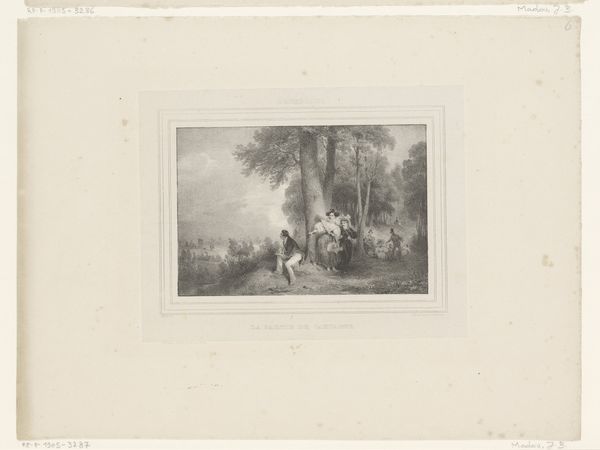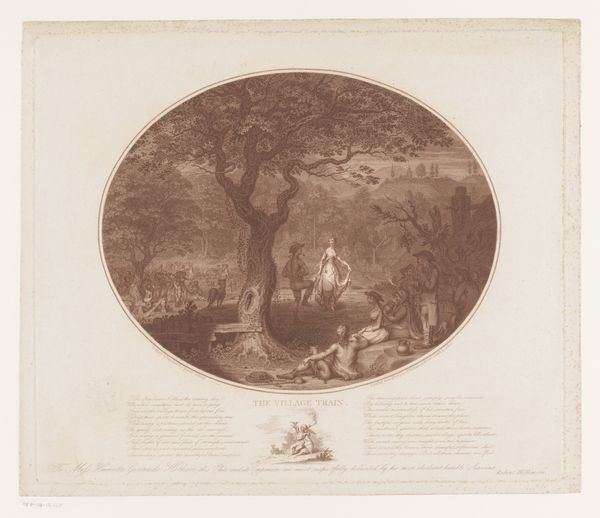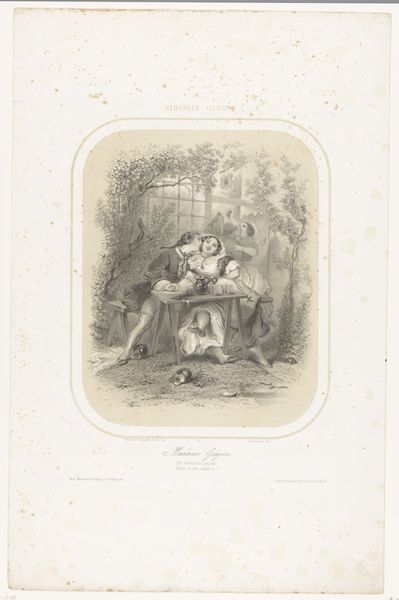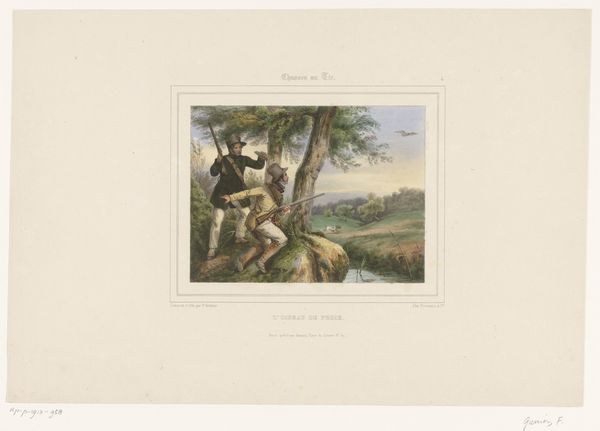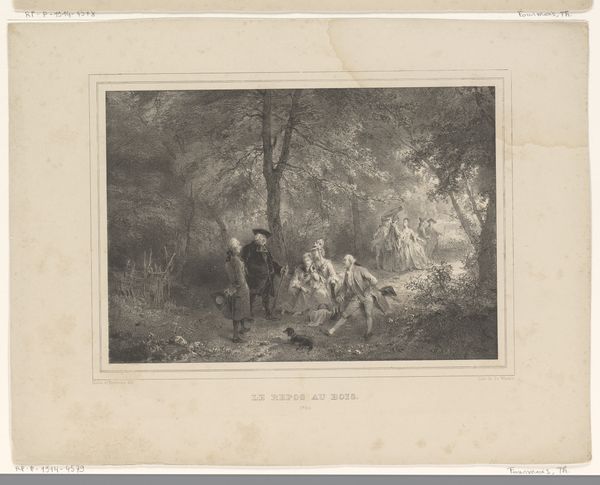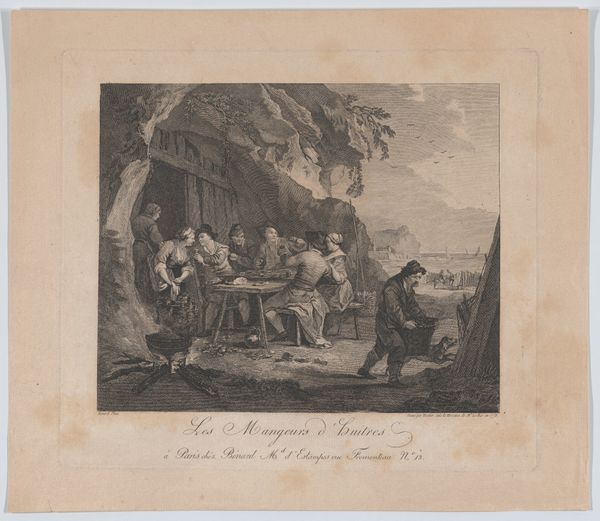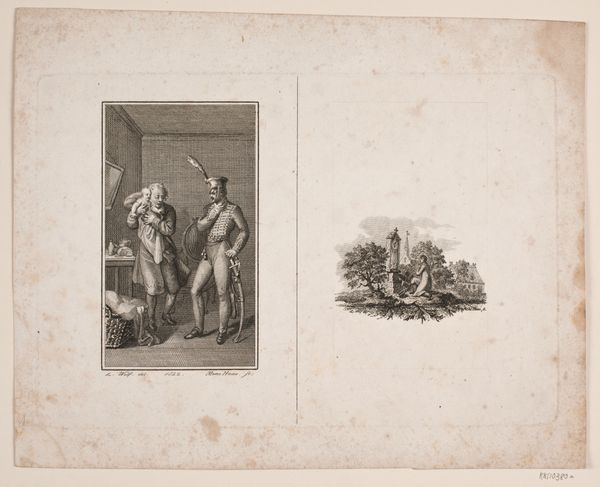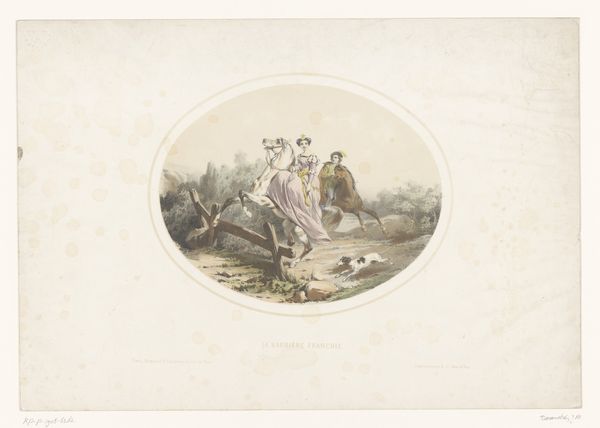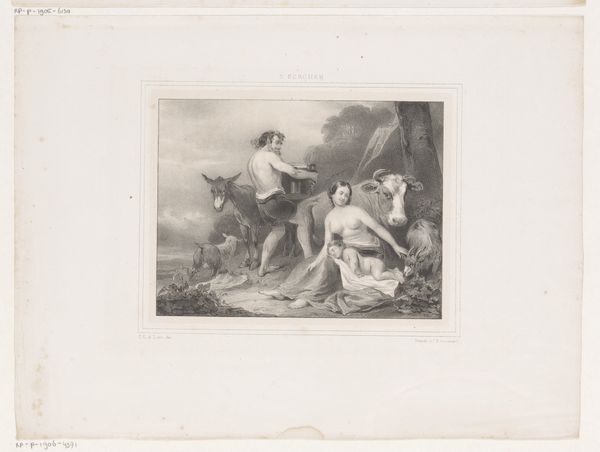
Rosalind, Oliver and Celia (Shakespeare, As You Like It, Act 4, Scene 6) 1791
0:00
0:00
drawing, print, watercolor
#
drawing
#
narrative-art
# print
#
figuration
#
oil painting
#
watercolor
#
romanticism
#
watercolour illustration
#
history-painting
Dimensions: Image: 12 3/16 × 14 15/16 in. (31 × 38 cm) Plate: 15 5/8 × 17 1/4 in. (39.7 × 43.8 cm)
Copyright: Public Domain
Curator: Immediately I feel transported. The palette, the way the figures emerge from the woods... it whispers of whispered secrets and gentle epiphanies. Editor: This watercolor print by Peltro William Tomkins, dating to 1791, presents a pivotal scene from Shakespeare's "As You Like It," Act 4, Scene 6, titled "Rosalind, Oliver and Celia". Let's unpack what's happening here. Curator: Before we dive in, I am quite swept away by the expressions! There's a distinct emotional layering—surprise, maybe a touch of… grief? Is that Oliver, the fellow with the cloth? He seems to be making quite a dramatic announcement. Editor: Precisely. Oliver, now reformed after mistreating his brother Orlando, recounts how Orlando saved him from a lioness. The faint the blood-stained handkerchief he presents tells it all. We see Celia comforting the disguised Rosalind at the shock of hearing about Orlando's valor and narrow escape. The narrative reinforces ideal masculine virtues that hinge on care and compassion, in a specific, classist framing of British history. Curator: It's so interesting how the figures are arranged! The Romantic sensibilities almost border on operatic, don’t you think? There's a heightened sense of… drama unfolding! Plus that staging, in nature… feels revealing in itself, about self, nature, performance! Editor: Romanticism consistently draws inspiration from dramatic literary scenes; and you’re right, the woodland backdrop is essential here. We’re asked to examine pastoral idylls and how power is staged and performed even in nature. What seems so "natural," the narrative reveals, can be just as contrived. It serves a vital contextual role. By returning the privileged back to nature, the piece attempts to naturalize social norms—and erases so many. Curator: It's remarkable to observe how this historical interpretation reflects not only a love for Shakespeare but also the visual language of its era. The artist clearly relishes exploring love and courage. Even through such an archaic framework, there is some timeless human experience within the snapshot itself. I am quite taken by it. Editor: And those complexities of interpreting history should also prompt critical discussions about whose stories were considered central enough to depict and preserve—and who remains largely out of view even within supposedly universal tales of "love" and "courage." Thank you!
Comments
No comments
Be the first to comment and join the conversation on the ultimate creative platform.

